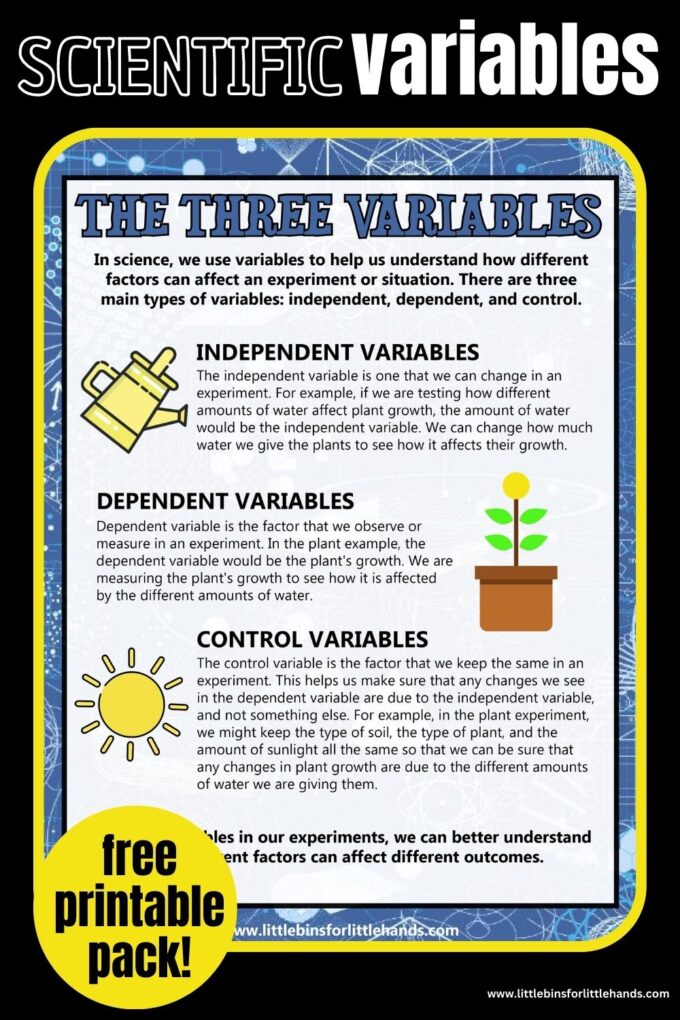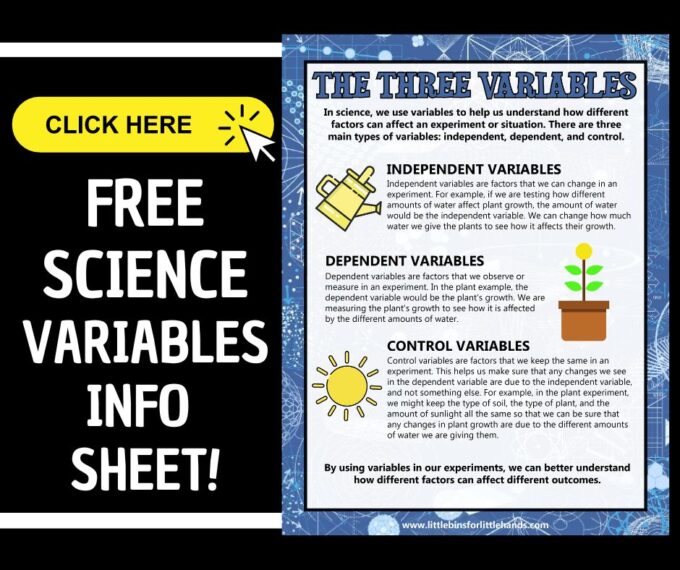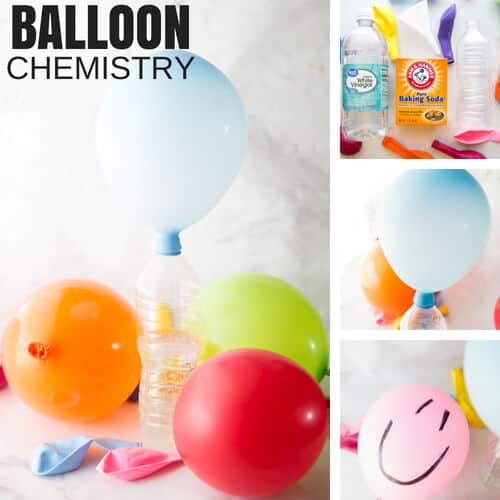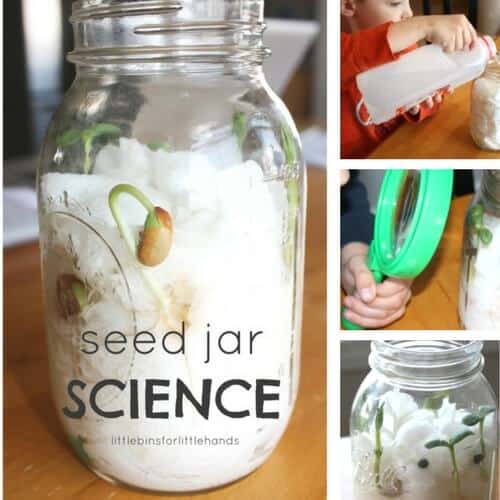Whether setting up a science experiment for a science project, or learning more about the scientific method, variables in science are important. Find out what variables mean, what are three types of variables you need to know, plus examples of independent and dependent variables in experiments. Enjoy hands-on and easy science experiments for kids today!

What Are Scientific Variables?
In science, we use variables to help us understand how different factors can affect an experiment or situation. Variables are any factor that can be changed in the experiment.
Specifically, there are three different types of variables that help us answer our question that we are investigating. Identifying these variables before you start will guide your decisions about how to conduct your experiment and how to measure the results.
Three Types of Variables
The three main types of variables are independent variable, dependent variable, and controlled variables.
Independent Variable
The independent variable in a science experiment is the factor that you will change. The independent variable affects the dependent variable.
You can identify the independent variable by looking at what can exist in differing amounts or types, and what is directly related to the question of your experiment.
For example, if you are testing how different amounts of water affect plant growth, the amount of water would be the independent variable. You can change how much water you give the plants to see how it affects their growth.
Remember, choose only one independent variable for your experiment!
Dependent Variable
The dependent variable is the factor that you observe or measure in an experiment. It is the variable that is affected by changes made to the independent variable.
In the plant example, the dependent variable would be the plant’s growth. We are
measuring the plant’s growth to see how it is affected by the different amounts of water.
Controlled Variables
Control variables are the factors that you keep the same in the science experiment. This helps you make sure that any changes you see in the dependent variable are due to the independent variable and not something else.
With some experiments, you may choose to set up a control that has no amount of the independent variable added to it. All other factors are the same. This is great for comparison.
For example, in the plant experiment, you would keep the type of soil, the type of plant, and the
amount of sunlight all the same so that you can be sure that any changes in plant growth are only due to the different amounts of water you are giving them. You could also have one plant that you give no water.
Grab the FREE printable variables sheet!
Easy Science Experiments With Variables
Here are a few examples of independent and dependent variables in science experiments. All of these experiments are very easy to do, and use simple supplies! Of course, you could change out the variables in these examples by asking a different question.
Apple Browning Experiment
Investigate what stops cut apples from turning brown. Does lemon juice work the best or something else? The independent variable is the type of substance you apply to the apples to stop or slow down browning. The dependent variable is the amount of browning on each apple slice.
Balloon Experiment
Kids love this easy science experiment. Blow up a balloon with a vinegar and baking soda chemical reaction. Find out what amount of baking soda makes for the biggest balloon. The independent variable is the amount of baking soda added to the vinegar, and the dependent variable is the size of the balloon.
Celery and Food Coloring
Demonstrate how water travels through plants via capillary action with cut celery. The independent variable could be the length of time the celery is immersed in the water. The dependent variable is how far the food coloring has traveled throughout the celery.
Floating Orange
A fun and easy experiment that explores the density of peeled and unpeeled oranges in water. The independent variable could be the type of orange you use. The dependent variable is how much of the orange floats in water.
Grow Crystals
Turn your crystal growing activity into an experiment that explores how temperature of the solution affects the size of the crystals. The independent variable is the temperature and the dependent variable is the size of the crystals.
Gummy Bear Experiment
A dissolving candy experiment is fun to do! Here we used gummy bears to explore what liquid they dissolve the fastest in. You could also do this with candy hearts, candy corn, candy fish, or candy canes for fun variations.
The independent variable is the type of liquid you use to dissolve your gummy bears. You could use water, salt water, vinegar, oil or other household liquids. The dependent variable is the time it takes to dissolve the candy.
Ice Melting Experiment
Explore what makes ice melt faster. The independent variable is the type of substance added to the ice. You could try salt, sand and sugar. The dependent variable is the time it takes to melt the ice.
Magic Milk Experiment
Kids will love this color changing milk experiment with food coloring and dish soap. Investigate what happens when you use different types of milk. The independent variable is the type of milk and the dependent variable is how the food coloring moves through the milk.
Popsicle Stick Catapult
This is a fun physics activity especially for kids who love tinkering and building stuff, and you can turn it into a science experiment. Investigate how far an object travels as it weighs more.
The independent variable is the type of object you use on your catapult (vary by weight). The dependent variable is the distance it travels. This is a good experiment for repeating several times so you can average the results.
Salt Water Density Experiment
Explore the density of salt water vs fresh water with this simple science experiment. What happens to an egg in salt water? Will the egg float or sink? The independent variable is the amount of salt added to fresh water. The dependent variable is the distance of the egg from the bottom of the glass.
Seed Germination Experiment
Turn this seed germination jar into an easy science experiment by exploring what happens to seed growth when you change the amount of water used. The independent variable is the amount of the water used for each seed jar. The dependent variable is the length of the seedling over a period of time.
Helpful Science Resources
Here are a few resources that will help you introduce science more effectively to your kiddos or students and feel confident yourself when presenting materials. You’ll find helpful free printables throughout.
Science Vocabulary: It is never too early to introduce some fantastic science words to kids. Get them started with a printable science vocabulary word list.
What Is A Scientist: Learn about the different types of scientists and what they do. Read What Is A Scientist
Science Books: Sometimes the best way to introduce science concepts is through a colorfully illustrated book with characters your kids can relate to! Check out this fantastic list of science books.
Science Practices: These eight science and engineering practices are less structured and allow for a more free–flowing approach to problem-solving and finding answers to questions.
Fun Science Experiments To Try: Don’t just read about science, go ahead and enjoy one of these fantastic kids science experiments!
Science Experiments By Age Group
We’ve put together a few separate resources for different age groups, but remember that many experiments will cross over and can be re-tried at several different age levels. Younger kiddos can enjoy the simplicity and hands-on fun. At the same time, you can talk back and forth about what is happening.
- Science for Toddlers
- Science for Preschoolers
- Science for Kindergarten
- Science for Early Elementary Grades
- Science for 3rd Grade
- Science for Middle School
Printable Science Projects For Kids
If you’re looking to grab all of our printable science projects in one convenient place plus exclusive worksheets and bonuses like a STEAM Project pack, our Science Project Pack is what you need! Over 300+ Pages!
- 90+ classic science activities with journal pages, supply lists, set up and process, and science information. NEW! Activity-specific observation pages!
- Best science practices posters and our original science method process folders for extra alternatives!
- Be a Collector activities pack introduces kids to the world of making collections through the eyes of a scientist. What will they collect first?
- Know the Words Science vocabulary pack includes flashcards, crosswords, and word searches that illuminate keywords in the experiments!
- My science journal writing prompts explore what it means to be a scientist!!
- Bonus STEAM Project Pack: Art meets science with doable projects!
- Bonus Quick Grab Packs for Biology, Earth Science, Chemistry, and Physics











